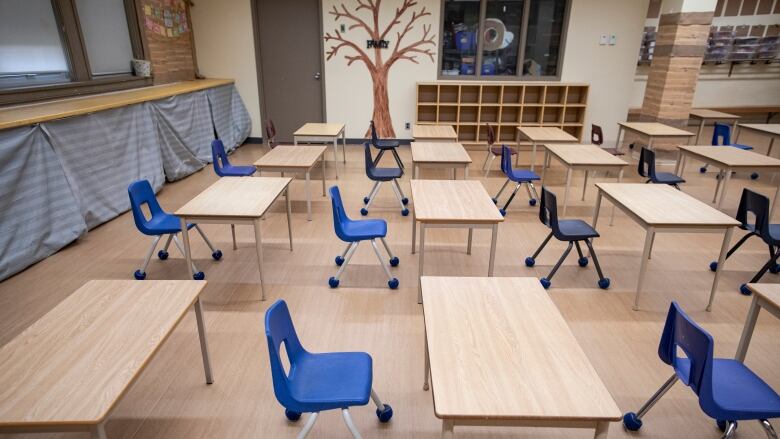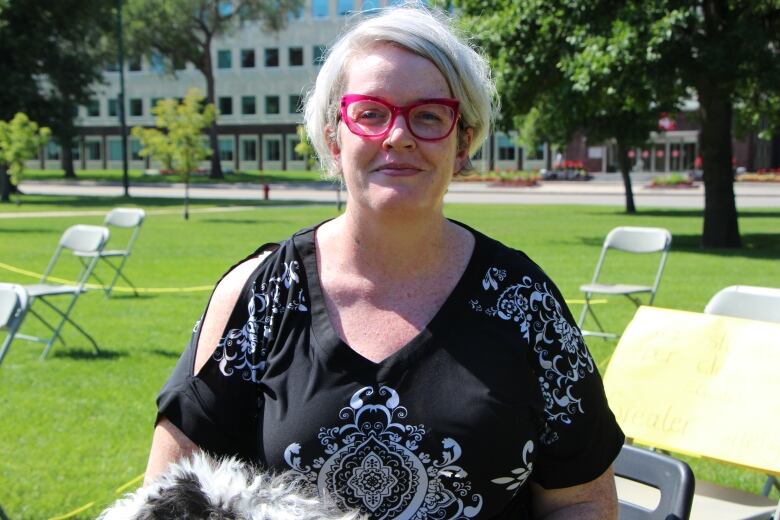Manitoba school ventilation projects might not clear the air of COVID-19, expert says
14 Manitoba schools slated to get ventilation upgrades between now and summer 2023

Jeffrey Siegel says he gets frustrated when cost issues dominate the discussionaround improving ventilation in schools during the COVID-19 pandemic's fourth wave.
"Every dollar that Manitoba doesn't spend on improving schools, you're paying for in other ways down the road many times over," said Siegel, a professor in the department of civil and mineral engineering at the University of Toronto and an expert on indoor air quality.
Manitoba has issued guidance around ventilation in schools and committed tens of millions of dollars to more than a dozen ventilation-related projects across the province but Siegel says it may not be enough.
Since the start of the pandemic, doctors, teachers and parents have called on the province to take action to improve ventilation and filtration in schools in order to reduce the chances of COVID-19 transmission.
Manitoba's government has committed funding to ventilation and filtration projects at 14 schools, worth a total of $20.4 million, between now and summer 2023, with another $40 million going to school divisions to be used on other health and safety improvements.
That level of funding and number of projects "can't be adequate" in a province with more than 800 school facilities, Siegel said.
It may also fall short of efforts made in other jurisdictions such as Ontario and cities like Vancouver, which have either completed or are in process of upgrading air systems in all schools.
Funding can be used for ventilation upgrades: province
The Ontario government has committed $600 million in funding specifically to improve ventilation in schools.
Ontario Education Minister Stephen Leccehas said all 72 publicly fundedschool boards had installed standalone high-efficiency particulate air (HEPA) filters in all classrooms without mechanical ventilation systems, The Canadian Press reported earlier this month.
Ontario deployed 20,000 HEPA units to all kindergarten classrooms, even those that are mechanically ventilated.
Manitoba's spending on individual projects ranges from$130,000 to $2.6 million. The funding is going toward projects like upgrades to heating, ventilation and air conditioning (HVAC) systems and air handling units.
Three of those projects are complete and three more are expected to be finished this year, according to the province. The rest are due to be completed between now and summer 2023.
Agovernment spokesperson said the province has also committed $40 million of the $58-million 2021/22 Safe School Fundto school divisions on a per student basis to support a range of health and wellness initiatives.
"As addressing ventilation concerns is one of the health and safety measures, this funding can be used by school divisions to address ventilation related costs," the spokesperson said.
Manitoba'sguidancefor how schools should operate their ventilation systems isbased on recommendations from the American Society of Heating, Refrigeration and Air-conditioning Engineers (ASHRAE).
The provincial guidelines don'tspecifically address the use of portable HEPA filters in rooms without mechanicalventilation, but recommends that schools either not use those rooms or find "an engineered solution."
They also call on schools to flush the air in their buildingsevery day for two hours before and after occupancy.

Retrofitting old buildings with centralized mechanical ventilation systems can be invasive, "kind of like doing a lung transplant," Siegel says.
That's why many schools might opt to use portable HEPA units, or use natural ventilation.
The chair of ASHRAE's epidemic task forcesays HEPA filters are a cost-effective way of gettingthe amount of air flow needed to reduce aerosol transmission.
"Just basic air cleanersthese don't need to be high-tech settings. HEPA filters work quite well and have been tested and accepted by the health-care community for decades," said Bill Bahnfleth, a mechanical engineer with expertise in bio-aerosol control.
Prioritize ventilation in plans, group says
In B.C.,officials sayHVAC systems in all Vancouver School District schools now have the high-end MERV-13 filters (MERV standing for "minimum efficiency reporting value") thatASHRAE recommends, according to the Canadian Press's Sept. 8report.
In Calgary, HVACsystems in schools are being setto maximize outside air intake, CP reported.
In places with extreme climates like Manitoba, Bahnfleth says improving filter efficiency might be more cost effective than increasing ventilation, which requires air to be heated or cooled to meet indoor temperature and humidity standards.
Manitoba's guidance doesn't specify any minimum standard for filtration, recommending schools have a professional inspect HVAC systems and adjust them to maximize fresh air intake.
Schools should ensure they have the "highest level of air filtration allowable"within the operating recommendations for their HVAC systems,the guidelines say.

Lauren Hope, a Winnipeg teacher and advocate with the advocacy group Safe September, says the province and Manitoba school divisions need to prioritize ventilation improvements in their efforts to mitigate the spread of COVID-19 this fall.
"That mitigation is very expensive, if we look at it in terms of updating ventilation systems particularly in Winnipeg School Division, which has the most antiquated ventilation systems of any division in the province, simply because it's an older area of the city," she said.
"What we really need is the ability to open windows. We need to move lunches and every course we can outside where possible, and then we need to have filtration."
Winnipeg School Division says it is following all public health guidelines, which emphasizemechanical ventilation as the preferred strategy for indoor air quality.
The division is"optimizing the existing ventilation systems to maximize outside air,"spokesperson Radean Carter said in an emailed statement.
She said the division's existing HVAC systems allow schools to maintain adequatefresh air levels, and "in-classroom HEPA air filters are not required."
A spokesperson for the provincial government said the 14 schools receiving ventilation system upgrades were selected using a framework that prioritizeshealth and safety.
Siegel says social equity should also be a criteria for prioritizing projects.
"We know that people who are racialized or marginalized or lower socioeconomic status were exposed to worse air pollution, and that really does affect their health," he said.
Provinces need to act now to improve air quality in schools, he says, raising the concern a possible fifth wave of the pandemic could hit at the same time as the regular flu season.
"That could be the difference between whether schools are able to stay open through this late fall, when things might get kind of grim."
With files from The Canadian Press and CBC's Meaghan Ketcheson












_(720p).jpg)


 OFFICIAL HD MUSIC VIDEO.jpg)
.jpg)



























































































